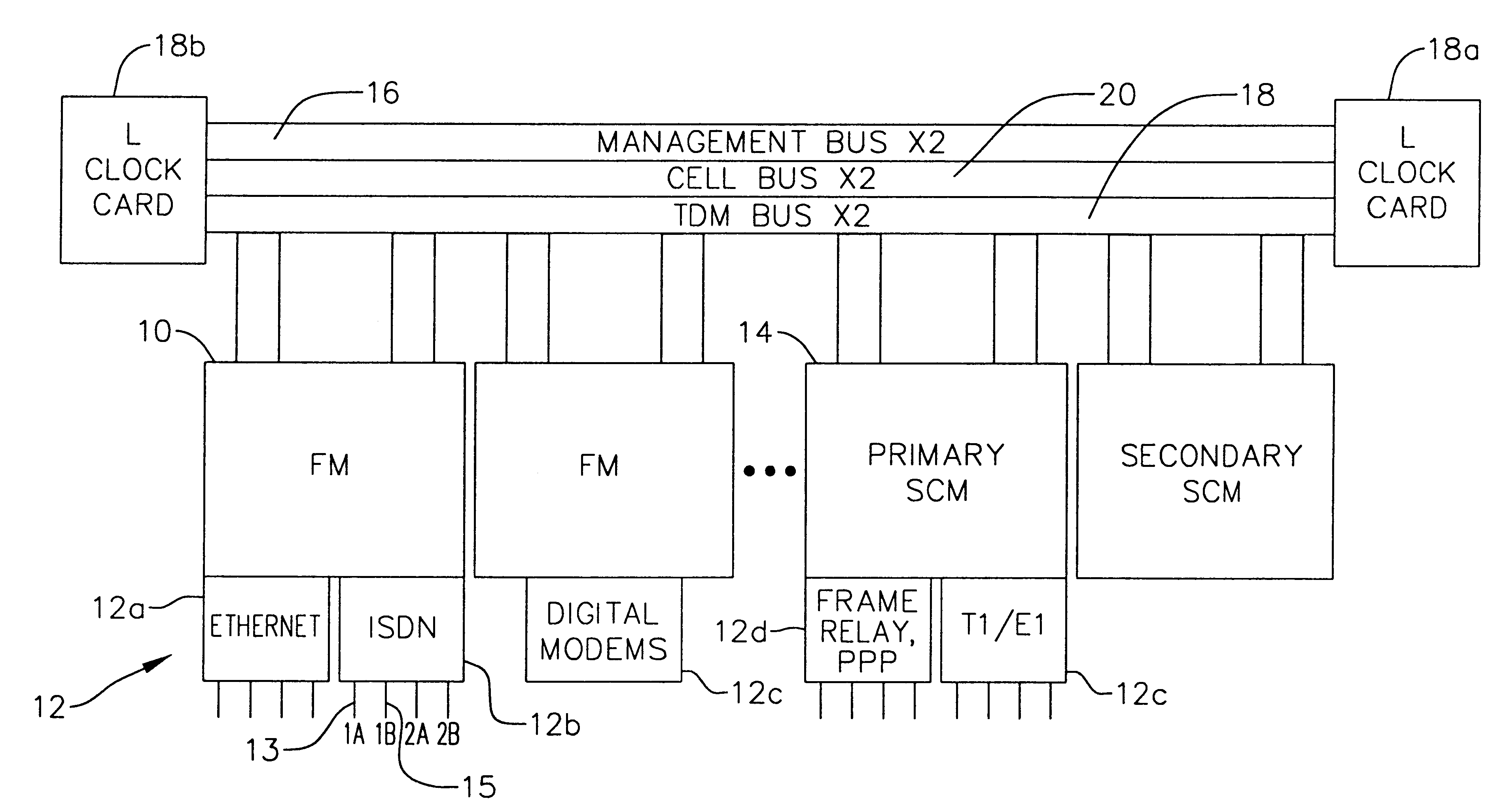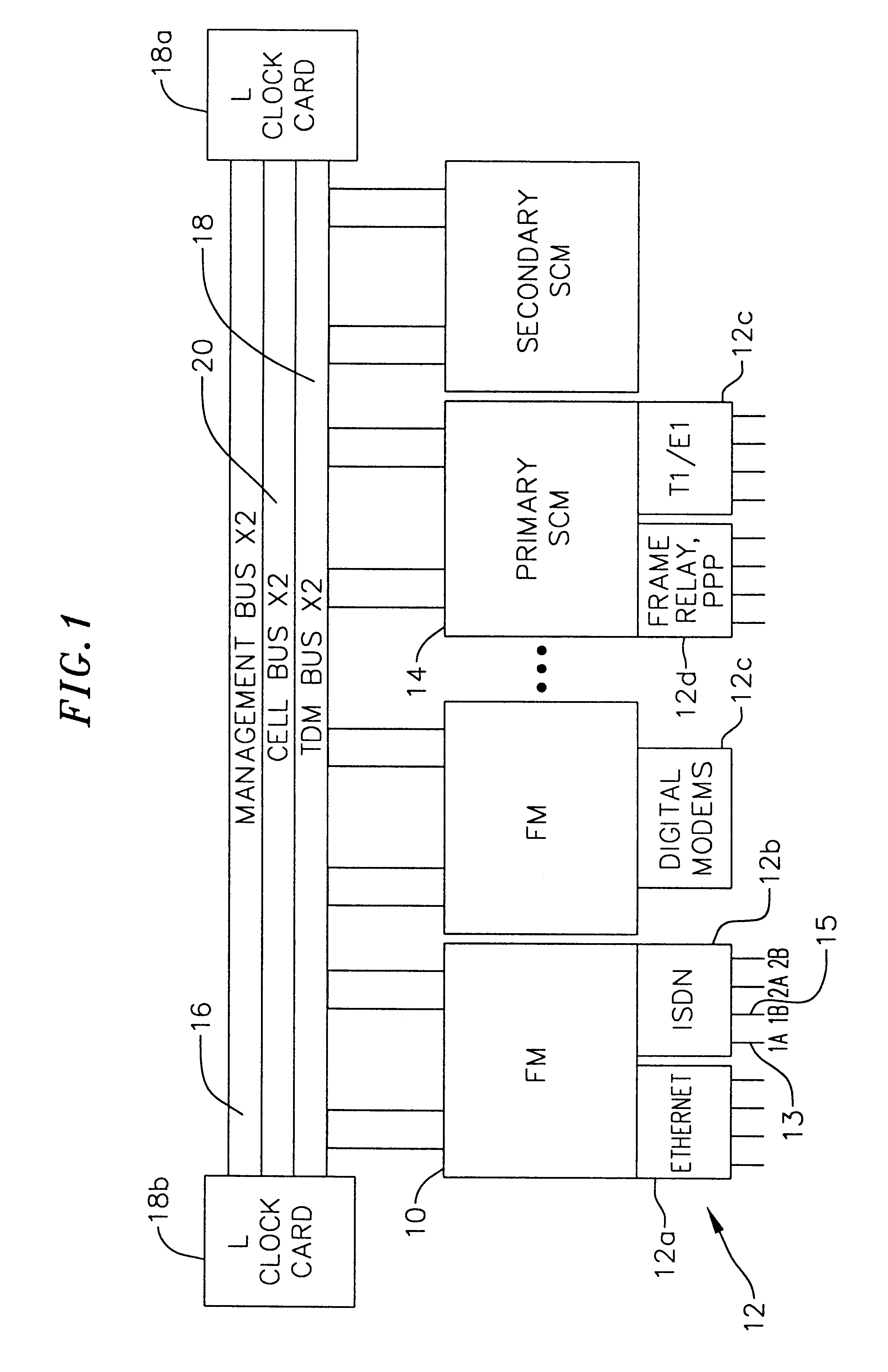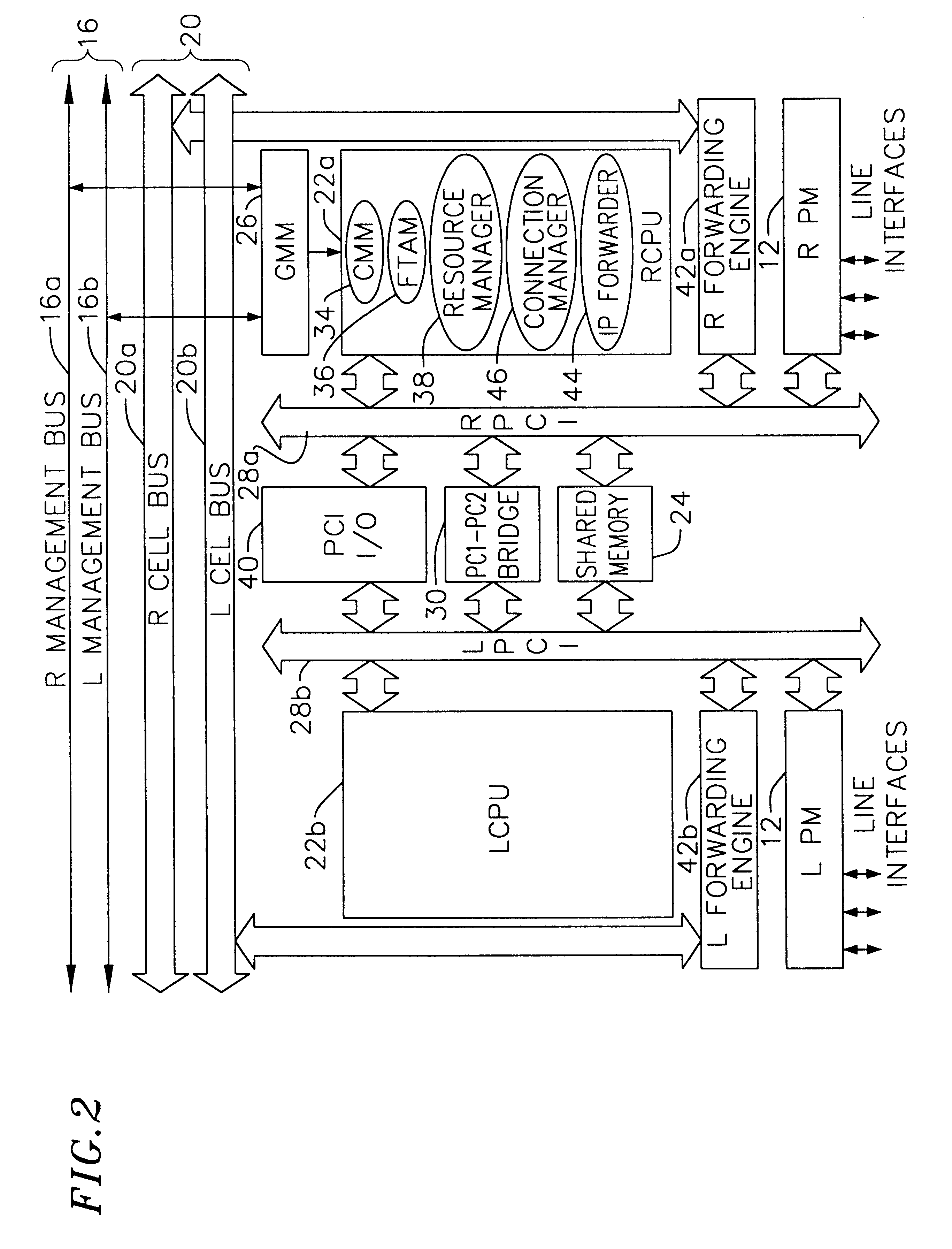Multi-service network switch with modem pool management
a multi-service network switch and modem technology, applied in the field of multi-service network switches, can solve the problems of network service providers facing extraordinary challenges, time-critical transactions, and inability to tolerate undue delay or disruption
- Summary
- Abstract
- Description
- Claims
- Application Information
AI Technical Summary
Benefits of technology
Problems solved by technology
Method used
Image
Examples
Embodiment Construction
I. Multi-Service Network Switch System Architecture
FIG. 1 is a schematic block diagram of a multi-service network switch (also referred to as the "chassis" or "system") according to one embodiment of the invention. Each slot on the switch preferably accommodates a single interface module (a card), referred to as a forwarding module (FM) 10. Each FM 10 preferably includes the on-board intelligence, route forwarding, and route processing information for distributed packet forwarding, as is described in further detail below.
One type of FM, referred to as a system control module (SCM) 14, hosts a route server and acts as the control point for network management. The SCM 14 also performs all the typical functions of an FM 10.
The switch includes at least two SCMs for fault tolerance, a primary SCM and a secondary SCM. The primary SCM is chosen at system startup, and announced to all the other FMs 10. The primary SCM preferably selects the secondary SCM as backup. If the primary SCM fails,...
PUM
 Login to View More
Login to View More Abstract
Description
Claims
Application Information
 Login to View More
Login to View More - R&D
- Intellectual Property
- Life Sciences
- Materials
- Tech Scout
- Unparalleled Data Quality
- Higher Quality Content
- 60% Fewer Hallucinations
Browse by: Latest US Patents, China's latest patents, Technical Efficacy Thesaurus, Application Domain, Technology Topic, Popular Technical Reports.
© 2025 PatSnap. All rights reserved.Legal|Privacy policy|Modern Slavery Act Transparency Statement|Sitemap|About US| Contact US: help@patsnap.com



